A story of passion. The story of Jean-Baptiste Tavernier and Louis XIV, the Sun King, hundreds of years ago… of Marie Vallanet-Delhom, president of the School of Jewelry Arts Van Cleef & Arpels, and François Farges, researcher at the National Museum of Natural History. They all have a shared passion for the Golconda diamonds, described as “the most beautiful”. The School is staging an exhibition of replicas of these famous diamonds – reproductions that are exceptional in themselves.
At the start of 2018, the School of Jewelry Arts decided to inspire us to dream and take us on a journey. Since 18 January, it has been exhibiting replicas of 20 exceptional Golconda diamonds, which were acquired by Louis XIV. Abraham Bosse, one of France’s most famous 18th-century engravers, depicted them in an etching*, describing them as “the most beautiful”. Simple and to the point. In 1668, at the age of 30, the young Sun King, who was an avid art collector (he had been introduced to the beauty of pearls by Anne of Austria and to the beauty of stones by Cardinal Mazarin), bought them from Jean-Baptiste Tavernier (1605-1689), an adventurer and travelling merchant. With their keen eyes, they both realised that these diamonds were true marvels, and every single diamond deserved to be the subject of a novel.
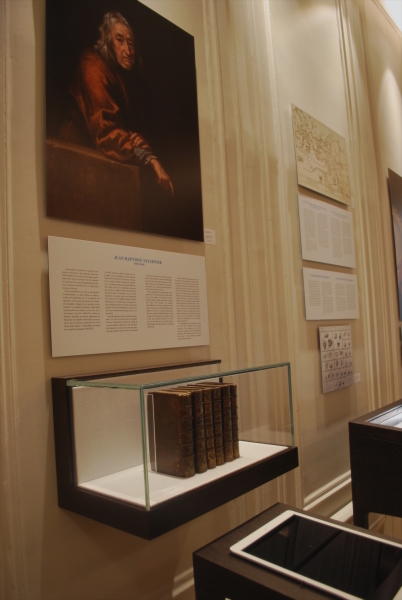
The legendary diamonds of a traveller and indefatigable “Orientalist”
But what are these legendary diamonds that were mined in India’s Golconda region at the time of the Mogul Empire? Seventeen cut diamonds and three rough diamonds; seventeen colourless diamonds, two pink and one blue. The most famous of these, the huge, blue Hope diamond (115 carats, re-cut under Louis XIV and again since then), is now held at the Smithsonian Institution of the National Museum of Natural History in Washington. Sadly, all the others disappeared during the 19th century (re-cut, lost, forgotten or stolen?), which is another reason why these replicas and this exhibition are so special. They were considered to be the “most beautiful” of the more than one thousand diamonds bought by Louis XIV from Jean-Baptiste Tavernier, who brought them back from his six trips to the Orient between 1663 and 1668. It should be noted that the two men knew each other well, as Tavernier had a number of links to Louis XIII, the father of Louis XIV, through his family of engravers.
Tavernier was also the inspiration behind this project. Little is known about him, despite the fact that he left behind important records and made an essential contribution to understanding the history of jewellery and precious stones. In its library, the School of Jewelry Arts has an original edition of his account of his travels dated 1713. It was acquired by Marie Vallanet-Delhom, who was captivated by his tales. Ever since the school was founded in 2012, her dream has been to spread the word about Tavernier. After a meeting with François Farges, a professor of mineralogy at the Museum of Natural History, who is an expert in gemstones, the idea gradually grew to combine their knowledge and skills and draw on the research carried out by Cécile Lugand, a PhD student who is writing her history of art thesis (University of Rennes) about the School of Jewelry Arts and Tavernier.
It should also be noted that in 2008, François Farges and the Museum had already worked on a replica of the Hope diamond, “the great blue diamond of Louis XIV”.
An innovative, multidisciplinary approach
The richness of the reproduction of these gems (mainly made of cubic zirconia, with epoxy resin for the 3 natural diamonds) is also down to the multidisciplinary approach, combining iconographic and historical research and analysis of ancient sources, knowledge of geology and mineralogy and the use of modern technical processes. This approach is championed by the School of Jewelry Arts, which seeks to inform and inspire the public about the history of gemstones and jewellery, but with accurate content and a scientific approach. So it was a question of reproducing the cuts made during the Moghul Empire in India in the 17th century – cuts that no longer exist today, with their specific faceting and incomparable beauty. And that wasn’t the least of their difficulties! The cutting was undertaken by Patrick Dubuc, a master lapidary from Quebec, who is equally passionate about his work (he is a professor of science and technical crafts) and regarded as North America’s “top faceter”. Despite the use of modelling software, the work still requires great skill and is extremely time-consuming.
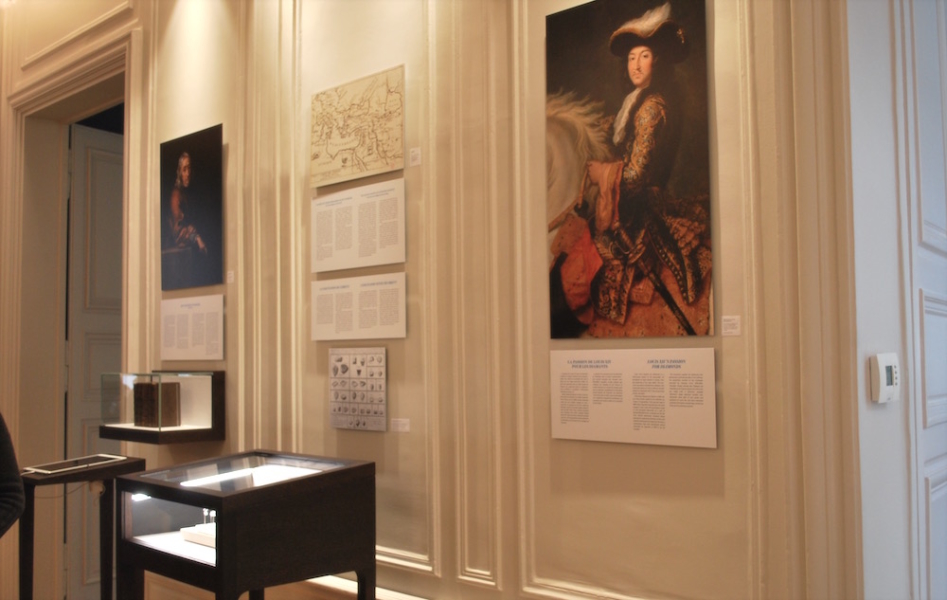 The colouring was also extremely complex. For example, in order to get the right colour for the Hope diamond, which was the most difficult to reproduce, it was necessary to carry out 100 tests, despite using all the latest technology! The “Golconda water” the colour that is characteristic of the Tavernier diamonds, is not easy to recreate, and must be “clean and bright”…
The colouring was also extremely complex. For example, in order to get the right colour for the Hope diamond, which was the most difficult to reproduce, it was necessary to carry out 100 tests, despite using all the latest technology! The “Golconda water” the colour that is characteristic of the Tavernier diamonds, is not easy to recreate, and must be “clean and bright”…
So, if you are not yet convinced, why should you come to see these replicas? Because no etching or description can convey the exceptional beauty of the 20 “most beautiful” diamonds owned by Tavernier and Louis XIV!
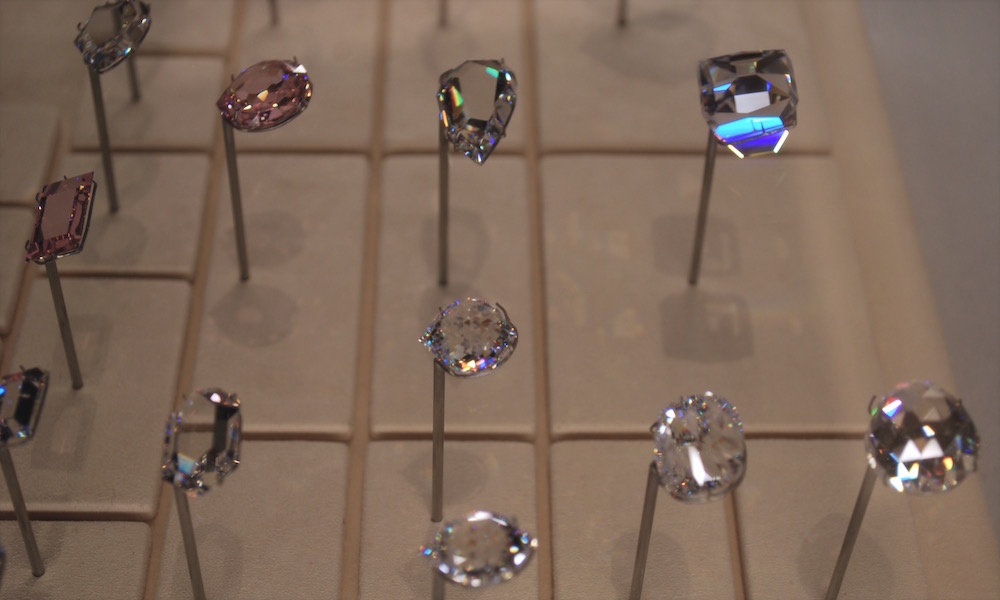
Practical information:
Lucky visitors had an opportunity to admire the displays free of charge from January 18 to 25. The exhibition is now open to school students, or by appointment.
An extremely informative and well-written 55-page catalogue is available entitled The Fabulous Destiny of the Tavernier Diamonds, From the Mogul Empire to the Sun King.
Contact:
School of Jewelry Arts, supported by Van Cleef & Arpels,
22, place Vendôme, 75001 Paris. Entry at 31, rue Danielle Casanova.
Phone: + 33 (0)1 70 70 36 00
E-mail: contact@lecolevancleefarpels.com
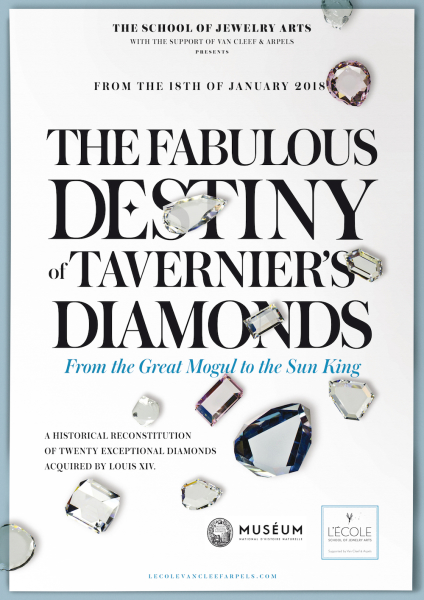
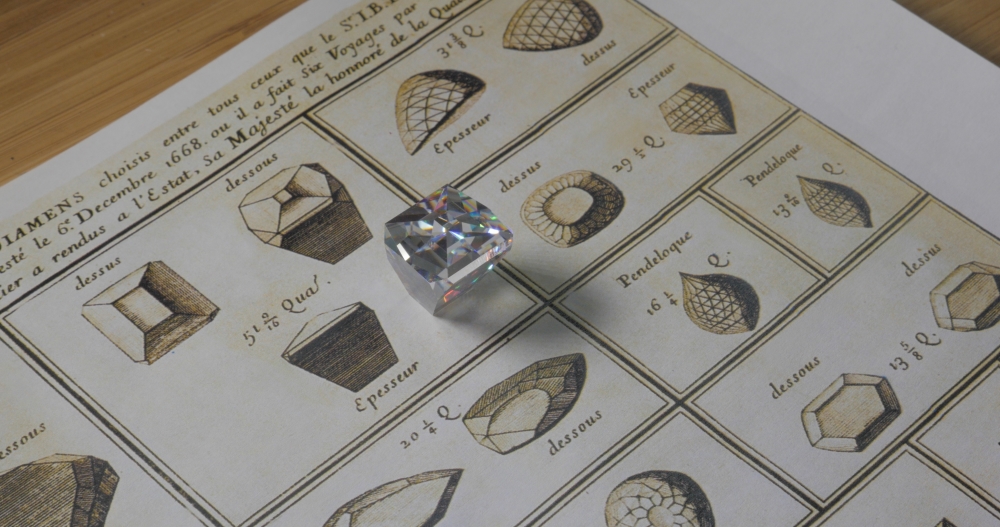
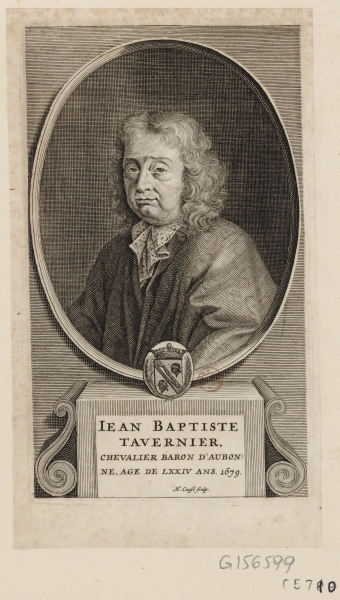
* This etching is one of the sources that formed the basis of the work and made it possible to create the replicas. It was digitized in 3D, and then a photo-realistic simulation made it possible to reproduce the real diamonds.
Photos © Marianne Riou/Rubel & Ménasché, François Farges,School of Jewelry Arts, BNF, DR.
